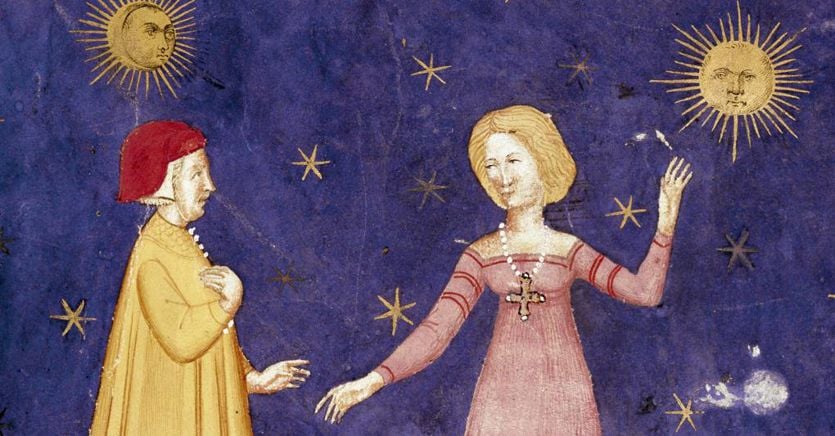Yet in the next thirty years, this barely touched girl will be both his obsession and his primary source of artistic inspiration.
In Platform, Houellebecq recalls a saying by Schopenhauer according to which “one remembers one’s life just a little more than a novel one has read in the past”. In fact, what will we remember, what do we remember of our youth, at the end of life? Little, and that little has increasingly uncertain boundaries. Dante, on the other hand, remembered everything. Not only hatreds (it is not uncommon for hats to be remembered for a long time) but also loves, that is, love: “You have taken me as a servant to liberate / by all those ways, by all ways, / that of what to do you have the power ”.
Paradiso
We are towards the end of Paradiso, Beatrice has resumed her seat in the rose of the blessed, Dante gives her a last thanks. They are verses written around 1320, thirty years have passed since her death: political revolutions, wars, poetry, misery, Italy traveled far and wide and, above all, that physical and psychological trauma that is (and then it had to even more to be) getting old – there is nothing that has stood still, in Dante’s life, in all this time, save the grateful and loving memory, the devotion to Bice Portinari.
In view of this, it is not surprising that a large part of this book by Santagata is dedicated to Beatrice. The other women in Dante’s life are too evanescent to deserve more than mere mention: the screen woman Dante pretends to pay his attention to in the first part of New life; the kind woman who tempts him at the end of the book; the stone-woman who inspires a small series of songs called “stony”. And after all: will it be real women or fictional characters? In the works in which we find them represented, the New life, in fact, and the Rhyme, the boundary between truth and fantasy is blurred.
More interesting are the real, historical women, transfigured by Dante’s poetic art: and here Santagata very happily combines the analysis of Dante’s verses with the scholarly information obtained above all from the ancient commentators, and gives us the profiles of memorable figures (but destined to oblivion, if the poet’s pen had not eternalized them) such as Francesca da Rimini, Pia de ‘Tolomei, Piccarda Donati; but he also manages to give consistency to characters that the non-specialist reader ignores or has forgotten: Sapia, Cunizza da Romano, the elusive Matelda.
